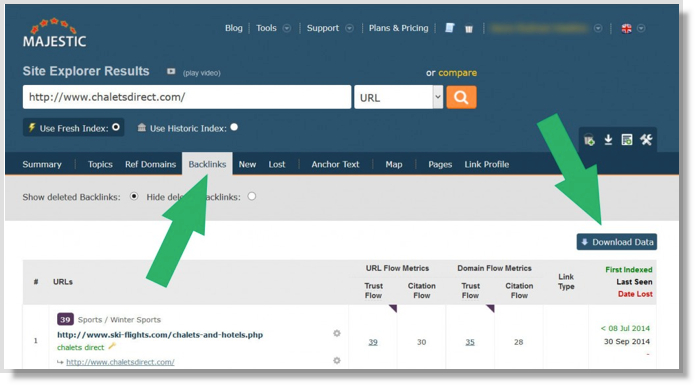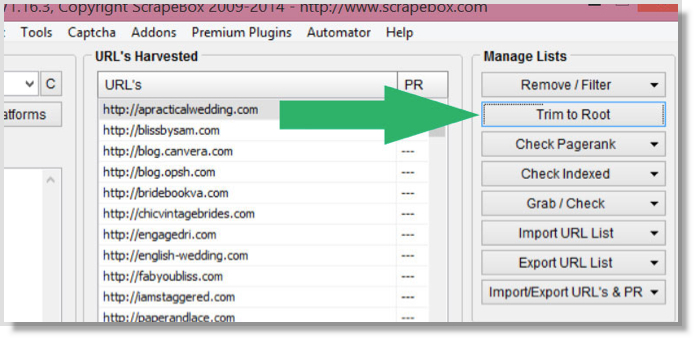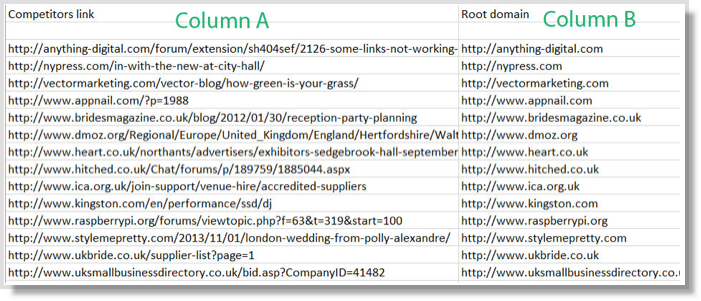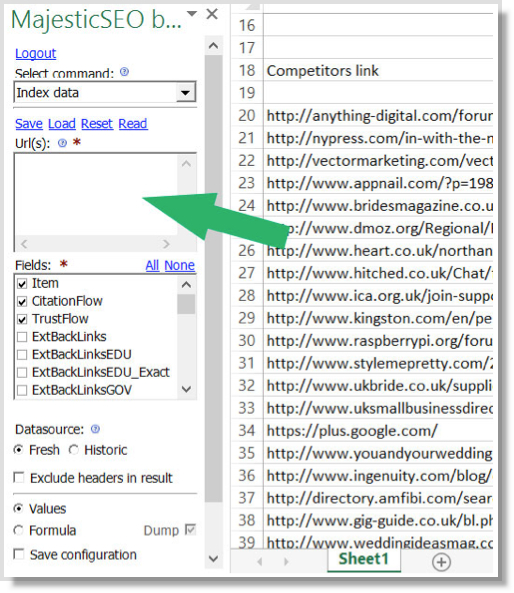
You’re wanting more traffic, conversions and sales aren’t you? Who isn’t! Well today I am going to share with you one of the most under-used and yet highly effective tactics to get free traffic from search engines.
Competitor research!
If done correctly this age old technique is guaranteed to help you identify the “best link opportunities” for your campaigns. Notice the first three words of that sentence “if done correctly”, I say that as very few individuals seem to know how to do competitor research effectively.
Competitor research
This is not some untold secret SEO trick. In fact I am sure you have heard many SEO’s and marketers talk about competitor research before, however very few people know how to do it well and fewer still can unearth the golden nuggets that will make all the difference to your online marketing efforts. Well today I am going to show you how we undertake competitor research at Evergreen SEO and how we find the golden nuggets every single time.
What is competitor research?
Despite the cloud of mystery that often surrounds so many aspects of online marketing, competitor research is very simple. We’re looking for the best links, citations and brand mentions our competitors have and identifying which we may be able to replicate for our own gains. To perform competitor research well, you will need a selection of tools, some paid some free. I will show you our method for establishing the best opportunities, how we categorize them and our process for contacting each site and some of the different angles we take.
Who are your competitors?
There is only one way to start competitor research and that is in identifying your main competitors. If you’re an in-house marketer it is likely you will know who your main competitors are, whether you do or not it is always worth asking colleagues and doing some research of your own before finalising a “key competitors list”.
If you’re an external SEO or marketer working on behalf of your clients (much like we are) then you will have to ensure you speak with your client and do your research as often clients will have a very different idea when it comes to their competitors than simply those you see in the SERP’s. For example many clients will consider their nearest geographic competitor as their stiff competition.
Once you have a list of competitors you’re set. I normally aim for 8-12 competitors in total. For this tutorial I suggest you focus on only one competitor as the process can simply be repeated over and over again once you know exactly how to find the golden nuggets.
Now things get interesting, boot up your favourite backlink analysis tool. We use Ahrefs and Majestic SEO. Ahrefs is a paid tool that starts at $ 79 a month – if you can afford this it is money well spent I can assure you. Majestic have a free account, however the paid options provide a great deal more data and start at £29.99 per month.
Run your competitor through the backlink checker and export the backlinks to an Excel file. Save each file with the competitors name to save confusion later. Note that these tools will export the files as CSV files. For ease of editing when you save be sure to change to an Excel file.

Sorting and culling
Now with your competitors backlinks listed it is time to find the links that are helping them rank so well. Note if you have used more than one backlink tool for each website then combine the total links gathered and use Scrapebox to remove the duplicates, watch this helpful video if you’re unsure how to do it.
Setting things up
Next up we want to strip the links to their root domain, reason being the root domain will always give us the most accurate representation of a website as a whole. Fortunately Scrapebox makes this task extremely easy. Now before you go ahead and get carried away, I have a top tip that is invaluable so make sure you do this part.
Take your entire list (one client at a time) and copy all the data into a .TXT file, save and then import that file into Scrapebox. I am assuming if you’re reading this post with interest you’re a serious marketer/SEO and I don’t know an SEO who doesn’t have Scrapebox. If however you have been living under a rock and don’t have it, you can buy it online relatively cheaply.
Okay so where were we…
Import your .TXT file into Scrapebox and then export straight away. Why? Because Scrapebox automatically sorts everything into alphabetical order and this will be invaluable for our next step to work properly.
Take that export file and overwrite your existing Excel file. The data should be exactly the same in quantity as all we have done is re-order to be alphabetical. Now go back to Scrapebox and update to the root domain only and export. Then add that data into Column B of your spreadsheet.

Still with me? Good, so to confirm at this point you should have the following. Your first competitor spreadsheet with two columns, column A with the links your first competitor has and column B with the list of the root domains, both columns should tally up and be in alphabetical order side by side. The link and the root domain.

An invaluable free tool for many SEO related tasks especially competitor research is the SEO Tools for Excel plugin. Get that downloaded and installed ASAP as you will need it for the next phase of competitor research.
Now we have sorted the competitor links, removed the duplicates and listed both the link itself and the sites root domain we need to cull the crap. Depending on the competitors your analysing and the industry you’re working in at this stage you could have only a few hundred links or tens of thousands, whichever the case may be don’t panic as we’re about to remove the vast majority of them.
There are several actions we need to take now so I have created a step by step list to ensure you can easily follow along. One competitor at a time we need to analyse the links for various metrics and then combine. This will give us the best links we want to see about replicating so let’s get started.
Step One:
Select up to 1,000 rows from column B (the root domain) and copy then paste into the box on the left.

Step Two:
Select the following options, Citation Flow, Trust Flow, Referring Domains (RD) and Referring .GOV Domains (.gov). Next, hit insert data.
Step Three:
Repeat for all rows in your list. If you have twenty-thousand or more links this can take a little time as you have to do them 1,000 rows at a time but it is very worth the effort in the end. Make a couple line gaps and then select the next 1,000 lines and repeat with the same metrics and crucially ensure all are in the same columns so all the data aligns.
Step Four:
With all lines of your data now finished we can start analysing and removing all those of no use to us. But first, hop over to Majestic SEO and input the root domain of yours/your clients site (the one you ultimately want to build links to and improve rankings). Make a note of the Trust Flow and Citation Flow for your site.
Step Five:
Order your data by Trust Flow so it goes from high to low for the entire list of root domains. Now start at the bottom and highlight all the rows that display a Trust Flow of ‘0’. NB: This is often A LOT of the data, if it is don’t panic, but do HIT DELETE. That’s right we’re culling our first load of data. Essentially all the websites with a Trust Flow of 0 are not trusted by Majestic SEO at all due some form of spam or other negative impacts. Trust me on this one, hit delete and then carry on reading.
Now select all the sites that have a Trust Flow less than or equal to that of yours/your client’s site and highlight in red. For example if your client’s site has a Trust Flow of 20 you would be highlighting all the sites with a Trust Flow from 1 up to 20 leaving only those sites with a Trust Flow 21 and above. For now we’re not deleting these sites, so just highlight in red.
At this stage you might be wondering why we are selecting all the root domains where the website has a Trust Flow equal to or less than yours/your client’s site. We’re using Majestic SEO’s Trust Flow as a gage of a sites quality. If we build links from sites that have the same or lower Trust Flow then it is unlikely we will improve our sites Trust Flow overall and from our experience improved Trust Flow is highly correlated with high rankings.
Of course the best part about this post and guide is that at the end of it, you can decide for yourself.
Step Six:
Select the Citation Flow column from top to bottom and order than high to low, now remove any 0 sites and then highlight in red all those with a Citation Flow less than yours/your client’s site.
Step Seven:
Next is the referring domains column, much the same thing. Order by high to low. The top of your referring domains column will likely feature a bunch of sites with hundreds or possibly even thousands of websites, glance at the Trust Flow… Pretty impressive right?
Trust Flow and lots of links go hand in hand and reflect quality/trust.
Now at this stage, it’s your discretion. I generally remove all sites with less than 50 referring domains, however depending on your niche that may not be possible so it’s your call. It goes without saying you should be removing all sites with 0 referring domains. If you have a wealth of sites listed with lots of referring domains then set the limit at 50 or even 100 and remove the rest. If the niche you’re working in has fewer links then set at 10.
*A quick note, before you delete any sites owing to referring domains take a look through the Trust Flow of the aforementioned domains and see if there are any sites with a Trust Flow particularly high. For example any sites with a Trust Flow of 8-10 higher than your site, you should keep. Sometimes ‘good’ sites slip through the referring domain net, so this 5 minute check avoids this.
Step Eight:
Our final column is that of .EDU (.GOV?) sites, again order high to low and then leave. No need to delete any sites. We simply have this column as a reference as any sites with these kind of authority links are going to gravitate to the top of the pile later one.
Step Nine:
We’re nearly there… Now we have sorted all columns one by one, re-order by Trust Flow as that is our primary measure. This is now where you need to earn your money as it were. We now have a list of the best links your competitor has. Start from the top of your list (once it’s been ordered by Trust Flow again) and then manually click the link for each site. Add a column for ‘Link Type’ and view the link then make a note of the type of link it is, be that a guest post, resource page, directory listing etc.
Any sh*t that has got through our net you can simply delete as you go through. However you can be sure now that the links you are looking at are the best your competitor has and this is a competitor who is currently ranking above you/your client.
Pay special attention to any .gov or .edu sites. Once you have been through the list and assigned a link type to each, order by that column and there you have it, the golden nuggets all ordered by type of outreach required.
Pro tip: If you’re really busy (lazy) there is no reason you cannot outsource step 9 to a VA leaving you time to concentrate on patting yourself on the back for a job well done.
Pro tip two: Ask your VA to collect contact details for each site they list at the same time, so you have the sites and their contact details listed and ready to be emailed.
Step Ten:
With all the data ready to go, your next step is to email all of those good quality sites and see which links you’re going to be able to replicate.
That’s all there is to it. Your now in the top 2% of SEO’s and online marketers when it comes to competitor research so rinse and repeat for every competitor of every one of your clients and dominate the search results in a completely white-hat, natural and organic manner.
Guest Author: Aaron Rudman-Hawkins is the managing director of Evergreen SEO, a search marketing agency based in Hertfordshire, UK.
Want to start your own website or blog? It’s easier than you think!
(292)






